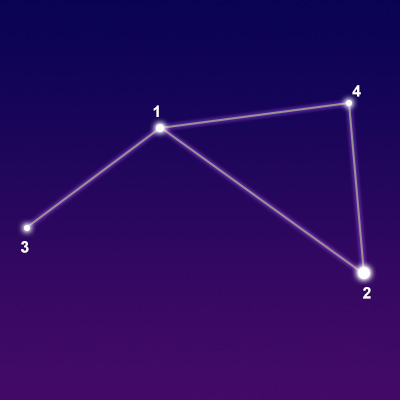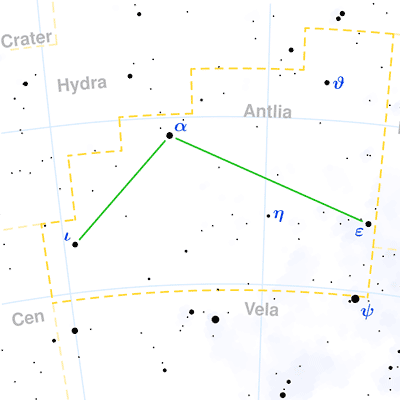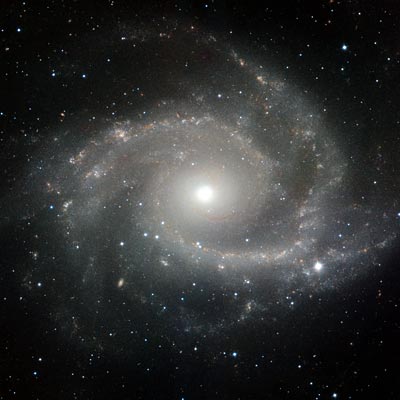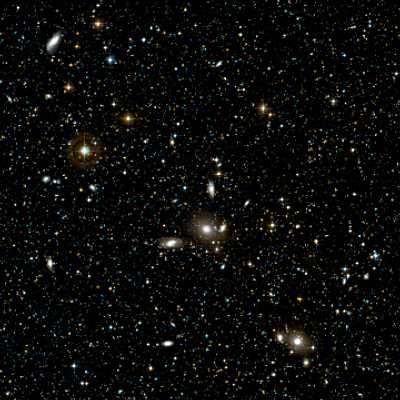Pronunciation:
(ANT-lee-uh)Abbreviation:
AntGenitive:
AntliaeRight Ascension:
10 hoursDeclination:
-35 degreesArea in Square Degrees:
239Crosses Meridian:
9 PM, April 5Visible Between Latitudes:
45 and -90 degreesThe constellation Antlia, the air pump, is located in the southern hemisphere of the sky. It can be seen at latitudes between 45 degrees and -90 degrees from January through March. It is a small constellation covering an area of 239 square degrees. It ranks 62nd in size among the 88 constellations in the night sky. It is bordered by the constellations Centaurus, Hydra, Pyxis, and Vela. Antlia occupies a mostly empty region of the sky and contains only faint stars. It requires a lot of imagination to see an air pump in this area.
There is no mythology associated with Antlia. It was too far south and too faint to be noticed by the ancient Greeks. It is one of the 14 constellations named by French astronomer Abbé Nicolas Louis de Lacaille in the 18th century to fill in empty spaces in the southern hemisphere. It was originally named "Antlia Pneumatica" to commemorate the invention of the air pump by French physicist Denis Papin. Lacaille depicted it as a single-cylinder vacuum pump used in Papin’s experiments. Later, German astronomer Johann Bode depicted the constellation as a more advanced double-cylinder pump. It was officially adopted as one of the 88 modern constellations by the International Astronomical Union in 1922.

points of interest below © Sea and Sky

© Torsten Bronger CC BY-SA 3.0
2
3
4
Epsilon Antilae
Iota Antilae
Theta Antilae
N/A
N/A
N/A
Orange Giant Star
Orange Giant Star
Binary Star System
4.51
4.60
4.79
Antlia is an extremely faint constellation with no stars brighter than magnitude 4. The brightest star in the constellation is Alpha Antilae with a visual magnitude of 4.28. It is an orange giant star located approximately 365 light years from Earth. The second brightest star is Epsilon Antilae with a magnitude of only 4.51. It is also an orange giant star that lies 700 light years from our Solar System. The third brightest star is Iota Antilae with a magnitude of 4.60. It is another orange giant star located about 199 light years away.
Antlia contains no Messier objects but there are a few interesting deep-sky objects. The Antlia Dwarf is a spheroidal galaxy located approximately 4.3 million light years from our solar system. NGC 2997 is an unbarred spiral galaxy known as a grand design galaxy. This means that it has clearly-defined spiral arms that extend around it. Only ten percent of spiral galaxies are grand designs. The Antlia Cluster is a cluster of about 234 individual galaxies. These objects are extremely faint and can only be seen with large telescopes.

© ESO/P. Grosbøl / CC BY 4.0

© Atlas of the Universe / CC BY-SA 3.0



